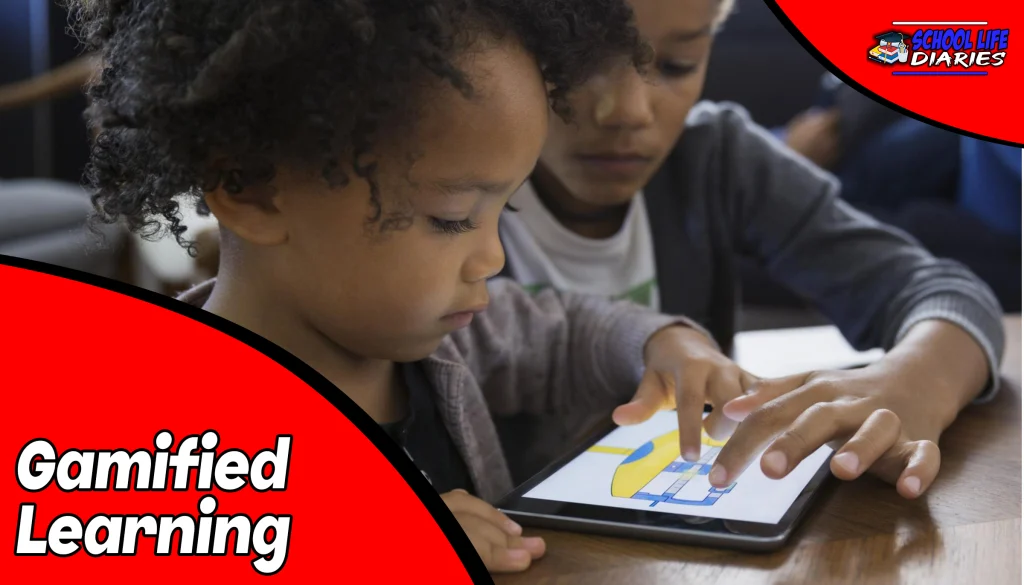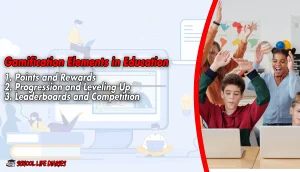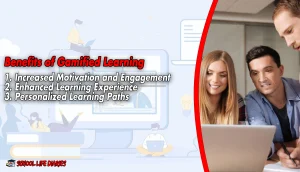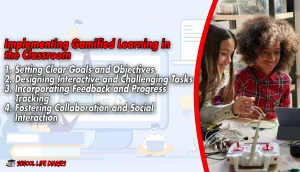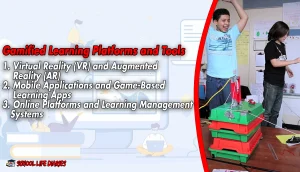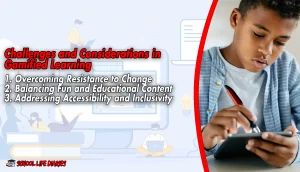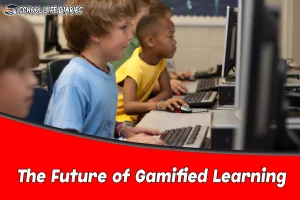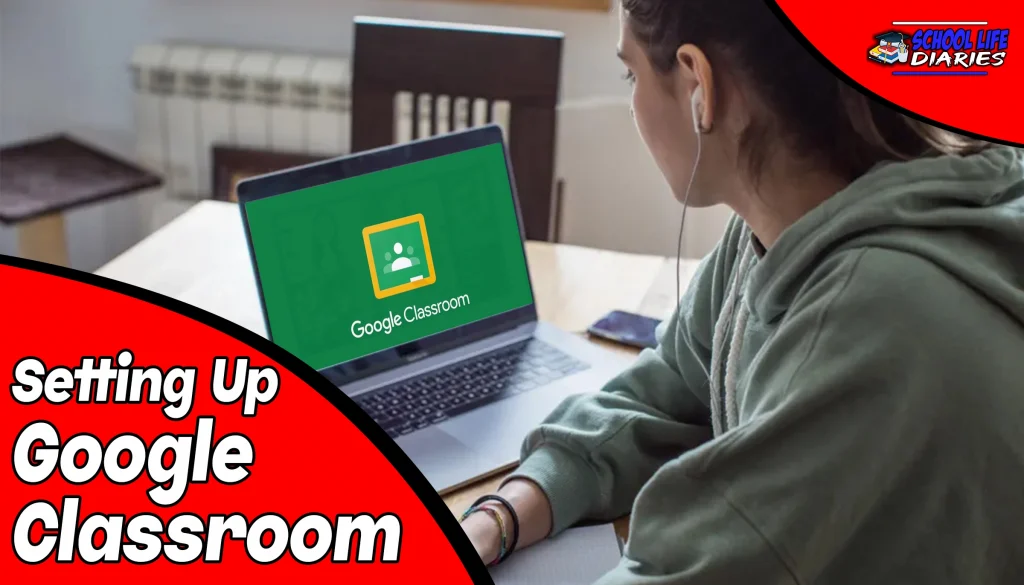Gamified learning is an educational approach that incorporates game elements, mechanics, and design principles into the learning process. It aims to make education more interactive, engaging, and enjoyable by leveraging the motivational aspects of games. In gamified learning, students participate in activities that simulate game-like experiences, such as earning points, completing challenges, and progressing through levels.
The Core Principles of Gamified Learning
Gamified learning is built upon several core principles that guide its implementation:
- Motivation: By integrating game elements, gamified learning taps into students’ intrinsic motivation, making learning more enjoyable and rewarding.
- Progression: Students experience a sense of progression as they advance through levels or stages, providing a clear sense of achievement and growth.
- Immediate Feedback: Gamified learning offers real-time feedback, allowing students to assess their performance and make adjustments accordingly.
- Competition and Collaboration: Gamification encourages healthy competition among students while also fostering collaboration and teamwork.
- Personalization: Gamified learning provides personalized learning experiences, catering to individual student needs and preferences.
Gamification Elements in Education
Gamified learning incorporates various elements from games to create an immersive and engaging learning environment. Some key elements include:
Points and Rewards
Points and rewards serve as incentives for students to actively participate in learning activities. They provide immediate feedback on progress and achievements, reinforcing positive behaviors and motivating students to continue learning.
Progression and Leveling Up
Progression and leveling up introduce a sense of achievement and advancement. As students complete tasks and demonstrate knowledge or skills, they unlock new levels or stages, providing a sense of accomplishment and encouraging further engagement.
Leaderboards and Competition
Leaderboards and competition create a competitive environment where students can compare their progress with peers. They promote a healthy drive for improvement and motivate students to strive for better performance.
Benefits of Gamified Learning
Gamified learning offers numerous benefits that positively impact the learning experience. Some key advantages include:
Increased Motivation and Engagement
Gamification enhances students’ motivation and engagement by making learning fun and enjoyable. It taps into their natural inclination for challenge and reward, fostering a sense of excitement and enthusiasm for learning.
Enhanced Learning Experience
By incorporating interactive elements, gamified learning transforms passive learners into active participants. It encourages critical thinking, problem-solving, and decision-making, creating a holistic learning experience that goes beyond rote memorization.
Personalized Learning Paths
Gamified learning allows for personalized learning paths tailored to individual student’s needs and learning styles. It adapts to their progress, offering targeted content and challenges, ensuring that each student receives a customized educational experience.
Implementing Gamified Learning in the Classroom
To effectively implement gamified learning in the classroom, educators should consider the following strategies:
Setting Clear Goals and Objectives
Clear goals and objectives provide students with a sense of purpose and direction. Educators should clearly communicate the learning outcomes and expectations associated with gamified activities.
Designing Interactive and Challenging Tasks
Gamified learning thrives on interactive and challenging tasks that promote active engagement. Educators should design tasks that require critical thinking, problem-solving, and creativity, stimulating students’ cognitive abilities.
Incorporating Feedback and Progress Tracking
Timely feedback is crucial in gamified learning. Educators should provide feedback to students on their progress, acknowledge their achievements, and offer guidance for improvement. Progress tracking systems can also help students monitor their growth.
Fostering Collaboration and Social Interaction
Gamified learning provides opportunities for collaboration and social interaction. Educators should encourage teamwork, peer-to-peer learning, and healthy competition, fostering a supportive and inclusive learning environment.
Gamified Learning Platforms and Tools
Various platforms and tools can facilitate gamified learning experiences. Some popular options include:
Virtual Reality (VR) and Augmented Reality (AR)
VR and AR technologies provide immersive and interactive experiences that enhance gamified learning. They enable students to explore virtual environments, solve problems, and engage in hands-on learning.
Mobile Applications and Game-Based Learning Apps
Mobile applications and game-based learning apps offer accessible and engaging platforms for gamified learning. They provide students with on-the-go access to educational games, quizzes, and interactive content.
Online Platforms and Learning Management Systems
Online platforms and learning management systems (LMS) offer comprehensive tools for gamified learning. They provide educators with features such as progress tracking, content creation, and gamification elements integration.
Challenges and Considerations in Gamified Learning
While gamified learning presents significant opportunities, educators should be mindful of certain challenges and considerations, including:
Overcoming Resistance to Change
Introducing gamified learning may face resistance from students, parents, or educators unfamiliar with the approach. Addressing concerns and providing clear explanations about the benefits can help overcome resistance to change.
Balancing Fun and Educational Content
Finding the right balance between fun and educational content is crucial. Gamified learning should provide meaningful learning experiences while ensuring the educational objectives are met.
Addressing Accessibility and Inclusivity
Gamified learning should be accessible and inclusive for all students. Educators should consider diverse learning needs and ensure that the gamified activities are designed to accommodate different learning styles and abilities.
The Future of Gamified Learning
The future of gamified learning holds tremendous potential. As technology advances, gamified learning experiences will become increasingly immersive and personalized. Virtual reality, augmented reality, and artificial intelligence will further enhance the educational possibilities of gamification.
FAQs:
Q1: How does gamified learning benefit students?
Gamified learning benefits students by increasing their motivation and engagement, enhancing the learning experience, and providing personalized learning paths.
Q2: What elements are commonly used in gamified learning?
Common elements used in gamified learning include points and rewards, progression and leveling up, and leaderboards and competition.
Q3: What are some challenges in implementing gamified learning?
Challenges in implementing gamified learning approach include overcoming resistance to change, balancing fun and educational content, and addressing accessibility and inclusivity.
Q4: What tools and platforms are available for gamified learning?
Gamified learning approach can be facilitated through tools such as virtual reality (VR) and augmented reality (AR), mobile applications and game-based learning apps, and online platforms and learning management systems.
Q5: What does the future hold for gamified learning?
The future of gamified learning looks promising, with advancements in technology such as virtual reality, augmented reality, and artificial intelligence shaping more immersive and personalized educational experiences
Conclusion:
Gamified learning has revolutionized education by making learning more engaging, interactive, and enjoyable. By harnessing the motivational power of games, gamified learning motivates students to actively participate in their own educational journeys. With its ability to enhance motivation, promote critical thinking, and offer personalized learning experiences, gamified learning is poised to transform the way we educate future generations.

